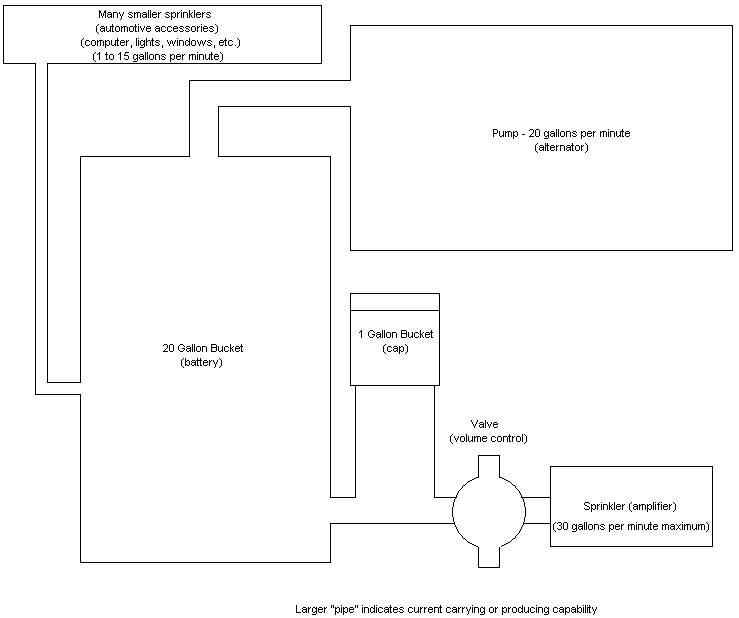soundzplus wrote:
Last time i checked --- a capacitor doesnt need a hi-out put alternator to "Charge" caps .. So - anyone with any experience in Car audio -- or 12volt in general - should know this This is the "12volt.com" right ?... Just checkin |
|
|
No, you are correct, a cap does not REQUIRE a HO alternator. BUT when a cap discharges for a loud beat of music, the remaining energy in that cap becomes a bit less. A cap, when connected to a power source (in this case the alternator/battery) will ALWAYS want to be fully charged, to it's maximum capacity in Joules. When a bass beat hits, SOME of the energy stored in the cap is used in the form of current, to supplement the POSSIBLE current sag from the battery. The cap WILL NEVER discharge all the way, which is, I think, a misconception some people have. It will then proceed to suck current from the alternator/battery FASTER than it put it out. This is a VERY short current drag (on the order of milliseconds, or even microseconds - it depends on how much current the battery can provide for this drain. Yes, I said battery, because it is a LOWER IMPEDANCE device than the alternator, also, electrochemical rather than electromechanical, so therefore faster), but the current peak can be HUNDREDS of amps, depending on how much energy was depleted from it during the bass hit.
oonikfraleyoo wrote:
| No a cap doesn't need a HO alternator to charge. But in that case while its charging it is drawing power away from your amps. A cap is not a cold fusion device. If the current is not already there, then a cap aint gonna put it there. |
|
|
Please see the above note: Additionally, because the cap DOES recharge (but in milliseconds) almost immediately, there is little chance that your amplifier will notice the current gulp your cap is "stealing" from it for it's recharge cycle. And actually, if the current is not already there, THIS IS EXACTLY WHAT A CAP IT PUT THERE TO DO! Fill in the current sag from the primary source. Also while all this discharging/recharging is going on, the alternator has had time to START PRODUCING ENOUGH CURRENT to fill in all of the potential sags in the power stream. This is why, if your alternator cannot make enough current, it will make current until it reaches it's capability, make that amount of current until it can't anymore, due to thermal or mechanical stresses, and if it does NOT fail, the battery will discharge further and further, until the entire electrical system fails. This IS a worst-case scenario, but this is basically what can happen.
(IMAGE DELETED. SEE MESSAGE BELOW)
I drew this up to let people visualize what actually happens with your electrical system. This should be pretty easy for everybody to understand. Just imagine everything being at 14.4 pounds of pressure (or 14.4 VOLTS) and it is a closed system.
You can see in this system what will happen if you allow your electrical system to be overloaded, and how the alternator and cap work, too...
It all reminds me of something that Molière once said to Guy de Maupassant at a café in Vienna: "That's nice. You should write it down."
 Printable version
Printable version



















 Try this one on for size...
Try this one on for size...

